Williams Brothers | Caudron
Reviewed by Rato Marczak
THE NEED FOR SPEED
You are aware that Williams Brothers Inc. is well known by producing golden age racers models, a usually overlooked theme in the plastic modeling industry. Their line of pre-WWII racers is the most complete in 1/32 scale, and some of the subjects are probably unique in any scale. The subject of this review is the Caudron C.450/C.460, a French sleek, incredibly small, and yet beautiful aircraft that dominated the airplane races during the mid 1930s. Four airframes were produced under the serial numbers 6907-6910, and these aircrafts sported different engine, mechanical and markings configurations during the 1934-36 triennial, making the approach for a specific aircraft a non trivial task. To make things worse, a number of inconsistencies still persist about some details. For you who, like me, don´t know much about racers, it suffices to mention that the Caudron racer broke several records during its time, and still holds one in the "Landplane records while absolute records held by seaplanes" class(C.460 s/n 6907 flown by Raymond Delmotte on December 25, 1934 - 314 mph / 506 km/h). In addition,C.460 s/n 6909 won both the Greve Trophy and the famous Thompson Trophy in 1936. Now to the model...
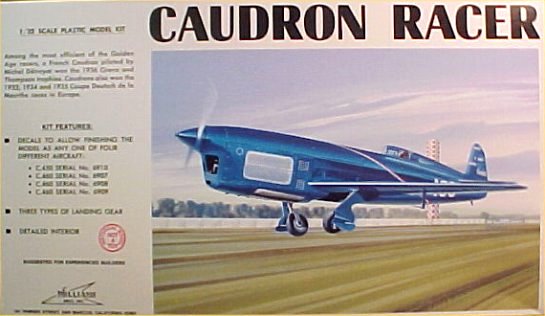
The boxart.
GENERAL
The kit comes in a small box - typical of William Brothers 1/32 models. Assembly instructions are merely a single exploded view in a corner of a folded A3 sheet full of text describing assembly steps and painting details. Read it very carefully to decide which specific aicraft (and year date) you are going to build from the outset (this is important). Besides, it is a quite interesting text summarizing the winning career of the Caudron designs. The back side of the instructions is a well done set of plans illustrating the markings for all machines. We won´t make any dimensional/shape checkings in this review due to my lack of data, but our editor Brad Hagen told me these plans are accurate (besides, it makes a beautiful poster!) . You won´t find many other alternatives, anyway.
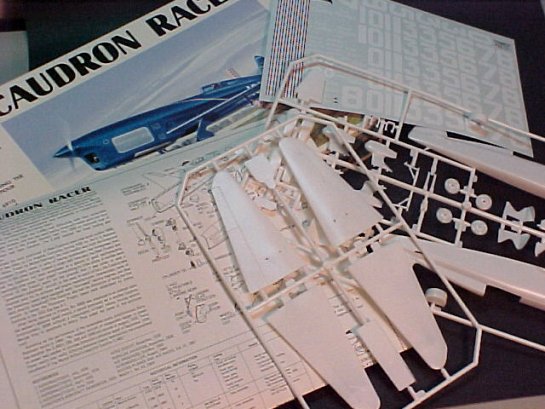
Opening the box.
The kit consists of two sprues totalling 56 soft, easy scribing, white styrene parts plus a clear windscreen. All surface details and panel lines are raised. There is a lot of flash around smaller parts but on the other hand the large ones are virtually free of any warping. There is no locating pins but the fit isgenerally acceptable.
The kit comes with a large decal sheet which enables the modeler to decorate any of the machines.
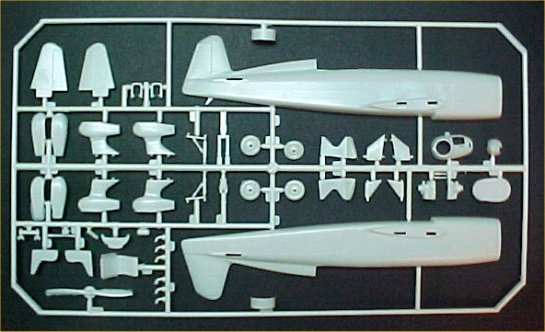
Sprue 1.
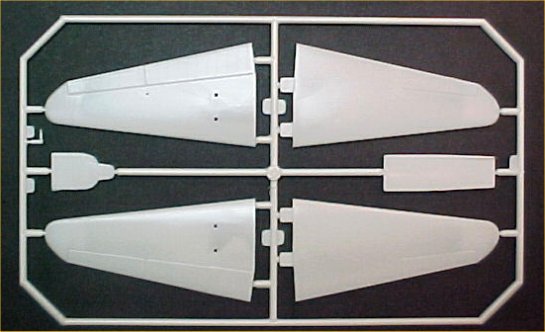
Sprue 2.
COCKPIT AND ENGINE
The cockpit is spartan, at best. Lots of flash to remove here. There is a seat, control column, pedals, bulkhead, floor and a few other smaller details. A decal is provided for the control panel, and some raised details are crudely molded inside the fuselage halves. Not much of it can be seen after the canopy is glued, but no doubt some of you will add something. I would suggest to sand the raised details inside the fuselage halves, add some ribs, a throttle and some wiring. That is a huge improvement over the kit parts.

Cockpit parts (seat, panel and control column). The propeller and the engine exhaust stacks are also shown.
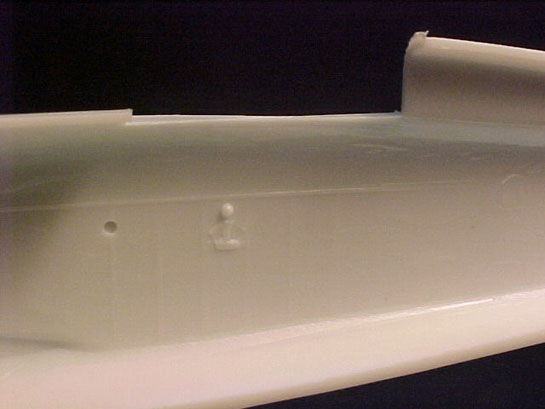
Cockpit details inside the fuselage...almost nothing
As for the engine, there is none. However, William Brothers provided the engine front end and a fake firewall to avoid the see-through when looking to the nose openings. The (only) cylinder is beautifully done, with perfectly molded cooling fins.
The fuselage halves come with both the ventral (bottom of cowling) and side (left fuselage) oil coolers. Study carefully the version you are going to build, because in the 1934 or 1935 Coupe Deutsch races versions only the ventral oil cooler was used and then the side cooler must be sanded flush. This is clearly stated in the instructions. In any case, the overall appearance can be much improved if you drill the grille holes with the appropriate diameter.
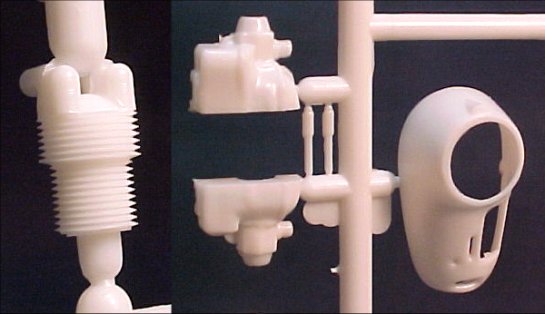
Engine details (cylinder, block, pushrods and nose)
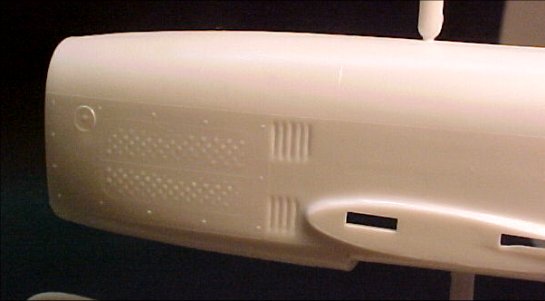
Side oil coolers. You must sand off this for the 1934-35 Coupe Deutsch races versions
LANDING GEAR
This is another point you should study carefully from the outset. The C.450 had a fixed,completely faired over landing gear, while the C.460 had a retractable landing gear system. However, in a couple of occasions, the C.460 presented problems with the retraction mechanism before the race and so the team locked it in down position and faired over the struts with smaller fairings than those used in the C.450 (the wheels fairings remained the same of the C.450). This is the reason why the kit comes with parts to build three landing gear options (fixed, retractable and a "faired retractable").
However, you have to cut the wheel bay openings from the lower wings and fuselage. Use the corresponding raised panel lines as a guide. The kit provides only a crude part to enclose the wheel bays, but it doesn´t avoid the see-through. I´m afraid you have to add something more elaborated here. On the other hand, don´t forget to sand flush these panel lines if you are building the C.450.
I´m sorry but I failed to locate any picture of this area. In fact, I failed to locate more than a few pictures on this aicraft. So I assume that it is ok to abuse of your artistic license.
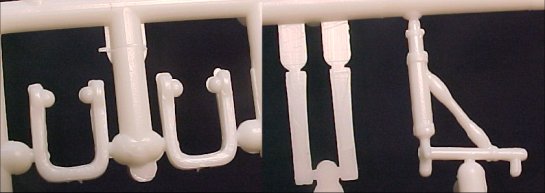
Landing gear struts.
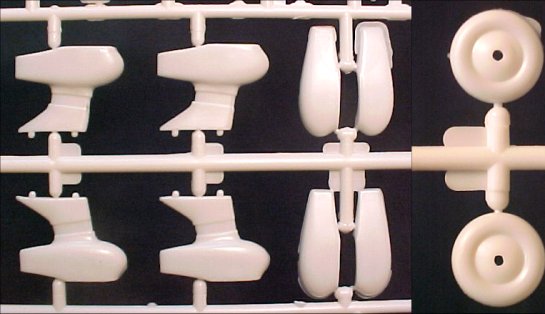
Landing gear fairings and wheels.
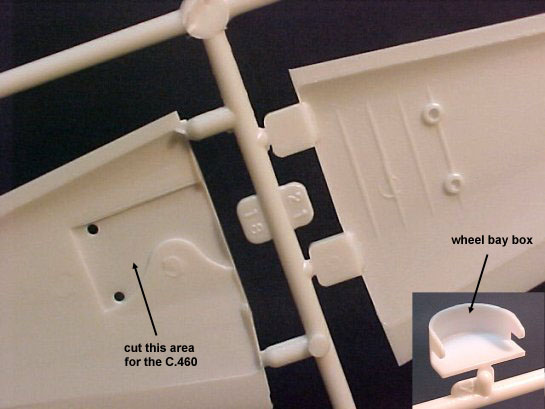
Wheel bay details on bottom (left) and top (right) wings.
MAIN PARTS
This is a surprisingly small 1/32 model. Its size made me wonder how small the actual machine was. The overall fit of the main parts is good and will pose no problem to the assembly. The flying controls can be easily removed by scribing, if you want something less plain. As I said, all panel lines are raised, but they are very few, in case you are thinking about rescribing them.
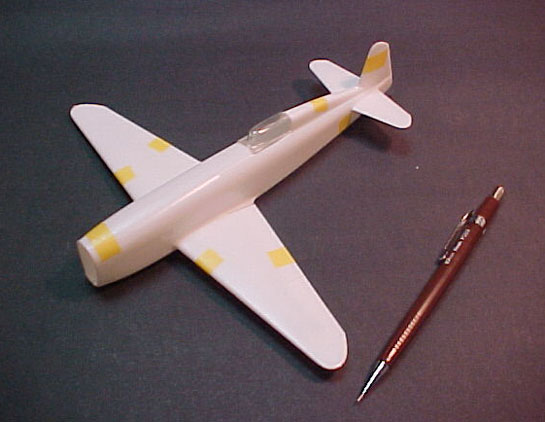
The main parts test fitted. And yes, I´m sure it is 1/32 !!!
With careful alignment, only a few areas will need putty, namely the wing roots and stabilizers. No big deal... just a bit of putty or superglue and sanding.
.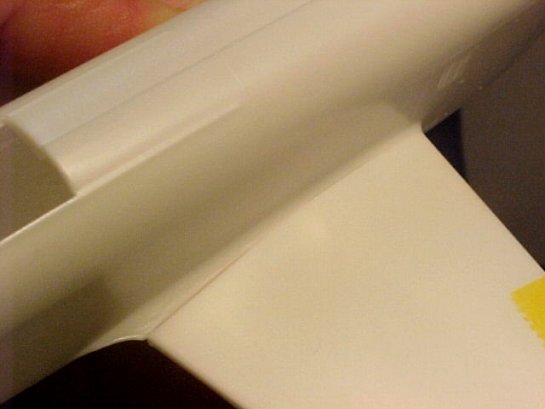
Wing/fuselage joint (top).
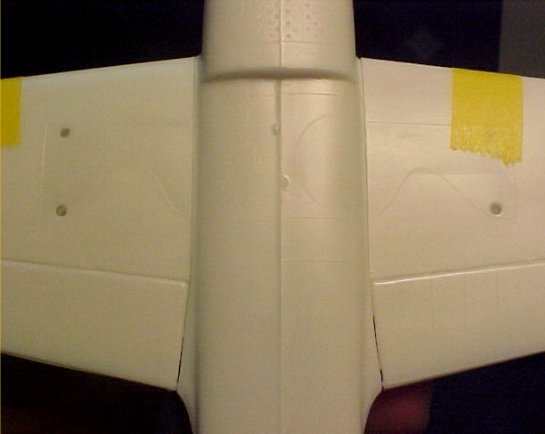
Wing/fuselage joint (bottom). Note the raised panel lines of the wheel bay.
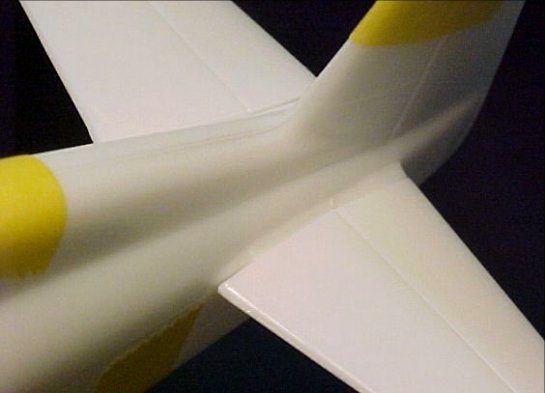
Stabilizer / fuselage joint.
CLEAR PARTS
Well, I mean (one) clear part. The windscreen is very thick and not much translucent. In fact, the part seems a bit crude, but I guess the usualpolishing + Future bath will leave it in much better shape. Pay attentionhere because the part is devoid of any frame lines, but they should be there.Use the plans in the instructions sheet as a guide to mask it correctly.
This type of windscreen slides forward as a single piece. In case you are thinking about an open canopy, try to find some photos of the actual aircraft to be sure of everything.
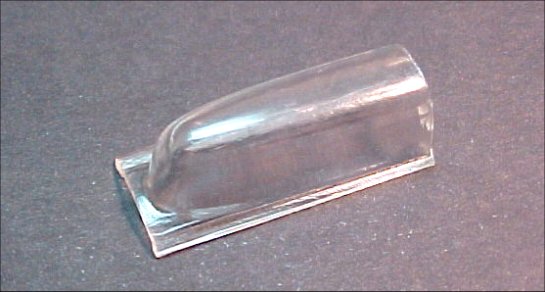
The windscreen.
DECALS
A strong point of the kit. As I mentioned earlier, every single aircraft produced can be made from the kit decals. The sheet is well printed by Scale-Master, and surely can be used throughout. The blue-white-red stripes will save a lot of painful masking. Again, you have to keep in mind what aircraft you are building because depending on the serial number, race, and year date the pilot varies. The Caudron racers sported its pilot´s name written in white on the left side of the nose, plus a colored identification disc. As stated in the instructions, some doubts about the disc colors persist. Interestingly, the red and the white discs are provided but not the green and yellow ones. This is because the sheet is printed in white, red and blue colors only. To save register problems and money, they provide clear disks to be painted with other colors before application.

The decal sheet

A zoom on the decal sheet
PAINTING
A single color aircraft. Easy, uh? Wait a second. Remember that this is a racer and, as such, used to sport a highly polished finish. So all that stuffs about blemish-free surfaces is on order, because as you all already know, this type of finishing is much less forgiving that an usual OD/gray. Maybe we should talk with that fellow modeler who builds cars. These guys knows a lot about highly polished finishes.
As for the color itself, I quote the instructions: "Number 6909 ... during the National Air Races was midnight blue. The other Caudrons were lighter blue, but the specific shade has not been determined". Ah, and a good hand of Future in the end.
The oil coolers are silver. The application of a dull Aluminum Bare Metal Foil will give a better finish, particularly if you drilled the grille holes. Another option that comes to my mind now is aluminum sheet from soda can. If you don´t mind drilling dozens of holes in perfect alignment...
FINAL COMMENTS
If you like racers, you must build this one. If not, you may try it anyway for a change. Besides his historical background, it is an easy build and will stand quite differently from your other (full of machine guns) models on the shelves.
You can add some stuffs in the cockpit. That´s all. Rescribing is up to you. Take your time and do your best with the paint job and decal application. No exhaust marks, not paint chipping, no heavy wing root scuffing and yet a very interesting subject.
My only reference for this project were a couple of web-pages. I also recommend a good look at Caz Dalton´s detailed article on the construction of this model here at LSP.
This model is easy to be found. For the records, this kit can be obtained from the Williams Brothers web site.
SUMMARY
Another overlooked subject. Merits to Williams Brothersfor producing it. However, it is an old model an far distant from modern model technologies. The basic shape is there, but the details leave a lot to be desired for today standards. And it is the only game in town.
I know not many of you will like the subject, but let me tell that once I test fitted the parts I confess that I thought "Wait a minute, this can be fun...". And that´s how you could face this model: even if you don´t like racers, give it a try as a two weekends project to decompress from long term highly detailed models. I´m sure you will have a lot of fun.
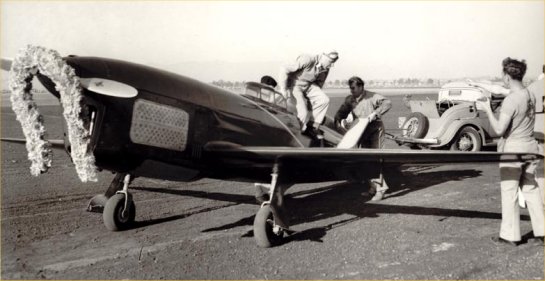
Photo of the Caudron C.460 taken after Michel Detroyat won the 1936 Thompson Trophy.
ACKNOWLEDGMENTS
We would liketo thank Williams Bros.Inc., for providing the review sample. Thanks for you support.
© Rato Marczak 2003
This review was published on Saturday, July 02 2011; Last modified on Wednesday, May 18 2016
